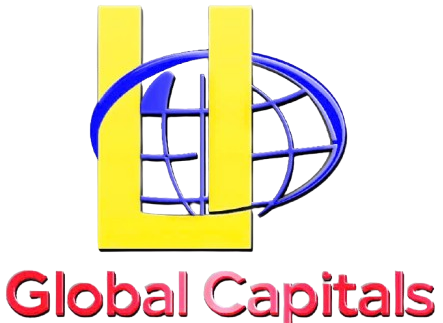Copper Snubbed in Critical Minerals Strategy: Strategic Oversight or Calculated Risk?
Introduction
In a decision that has stirred fierce debate among global investors, mining executives, and geopolitical analysts alike, the Australian Government recently unveiled its revised Critical Minerals List—notably excluding copper, one of the world’s most essential metals in the global energy transition. This exclusion has surprised many, particularly as peer nations such as the U.S., Canada, and the EU have already recognized copper as “critical” due to its role in electrification, renewables, and defense infrastructure.
The move raises fundamental questions about Australia’s strategic priorities, policy consistency, and implications for domestic and foreign investment in the nation’s mining and export sectors.
Background: What Is a Critical Mineral?
A “critical mineral” is defined by governments as a material:
-
Economically essential, particularly for national security or key industries (e.g., renewables, batteries, semiconductors), and
-
Vulnerable to supply disruptions, whether due to geopolitical risk, trade concentration, or underdeveloped domestic supply.
Australia’s list—administered by the Department of Industry, Science and Resources—includes lithium, rare earths, nickel, cobalt, vanadium, tungsten, and scandium, among others.
In July 2025, copper was excluded, despite widespread lobbying by the mining industry.
Why Copper Matters Globally
Copper is the backbone of modern infrastructure:
-
It’s used in electric vehicles (EVs), wind turbines, solar panels, and smart grids.
-
Every EV contains up to 4 times more copper than an internal combustion vehicle.
-
Transmission lines, charging stations, and renewables all depend on copper’s high conductivity and durability.
In 2024, S&P Global published a landmark study projecting global copper demand will double by 2035, outpacing supply unless mining and refining scale significantly.
Major economies have acted:
-
The U.S. Department of Energy added copper to its “critical” list in 2023.
-
Canada designated copper as critical under its Critical Minerals Strategy.
-
The EU placed copper on its 2023 Strategic Raw Materials Act draft.
Australia’s Decision and the Rationale Behind It
The Australian Government offered a brief explanation: copper, while important, does not currently meet the criteria of supply risk, as Australia already has stable reserves and well-established infrastructure.
According to Resources Minister Madeleine King:
“Copper has a mature market and diversified global supply. While it's essential, we must prioritize materials that face real supply chain challenges.”
This statement reflects a risk-weighted lens, focusing on scarcity over strategic demand. In short: Australia doesn’t believe copper needs policy support the same way lithium or rare earths do.
Industry Reactions: Sharp Criticism from Miners and Investors
Executives across Australia's mining sector strongly oppose the omission.
Glencore, Rio Tinto, and OZ Minerals—all with significant copper interests—have publicly questioned the decision.
Glencore’s head of Australian operations, in a press statement, said:
“This sends the wrong signal to global markets at a time when governments should be turbocharging green transition metals.”
BHP, which recently invested over AU$10 billion in expanding its copper operations in South Australia, expressed disappointment. “Copper plays an irreplaceable role in decarbonization. Australia risks falling behind,” a company official noted.
Industry group MCA (Minerals Council of Australia) also warned that the exclusion could “dampen foreign direct investment” and reduce eligibility for critical minerals tax incentives and infrastructure support.
Strategic Implications: Missing the Big Picture?
From a strategic investment standpoint, the exclusion presents several risks:
-
Reduced capital inflows: Projects lacking “critical” status may not qualify for concessional financing or fast-tracked environmental approvals.
-
Misalignment with allies: Australia’s non-inclusion of copper contradicts shared Western strategic frameworks, possibly weakening regional cooperation on mineral diplomacy.
-
Mixed signals to investors: Government-led ESG and climate transition policies now appear at odds with industrial policy.
For institutional investors, especially global funds with ESG mandates or exposure to the energy transition theme, copper’s exclusion injects uncertainty into investment strategy in Australian mining.
Local Projects Left in Limbo
Several major Australian copper projects could be adversely affected:
-
Mt Isa (Queensland): Owned by Glencore, faces declining ore grades and needs government support for brownfield expansion.
-
Hillside Copper Project (South Australia): Looking to attract international investment and seeking tax offsets that may now be unavailable.
-
Olympic Dam: A massive, multi-metal project operated by BHP that includes copper, uranium, and gold—its copper operations may be deprioritized under current frameworks.
Many of these projects are “shovel-ready” but require policy certainty to proceed.
Global Comparisons: What Peer Nations Are Doing
Let’s look at how other major economies are supporting copper:
| Country | Copper Status | Support Mechanisms |
|---|---|---|
| USA | ✅ Critical | DoE loans, tax credits, permitting fast-tracks |
| Canada | ✅ Critical | Export Development Canada support, subsidies |
| EU | ✅ Strategic | Raw Materials Act subsidies, supply monitoring |
| Australia | ❌ Omitted | No access to Critical Minerals Facility funding |
This chart illustrates how Australia’s policy risks creating a competitive disadvantage for its own mining sector.
What Investors Should Watch
-
Policy Reversals or Addendums
Ministers have hinted that the list is dynamic. Investors should monitor statements from Canberra—especially during trade dialogues with the U.S. and Japan. -
State-Level Incentives
Some states, like South Australia and Queensland, may roll out their own incentives for copper exploration and refining, bypassing federal policy gaps. -
Strategic Alliances and Offtake Agreements
Watch for partnerships between Aussie copper miners and EV/battery manufacturers from South Korea, Japan, and Germany who need to secure long-term supply. -
M&A Activity
The lack of government support could trigger consolidation, as large players absorb smaller copper juniors struggling with financing.
Conclusion: Short-Term Snub, Long-Term Opportunity?
While copper’s omission from Australia’s Critical Minerals List has disappointed industry stakeholders, it does not change the fundamental reality: demand for copper is rising globally and will outpace supply for years to come.
For investors, this is a buying opportunity in disguise—provided they take a long-term view and price in policy catch-ups. Australia remains a top-tier jurisdiction for copper extraction, with stable governance, skilled labor, and strong ESG frameworks.
The real question is whether Canberra will course-correct before capital flows elsewhere.


_20250711081034.jpeg.webp)

_20250711081658.jpeg.webp)
_20250711081843.jpeg.webp)